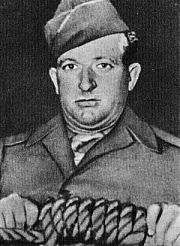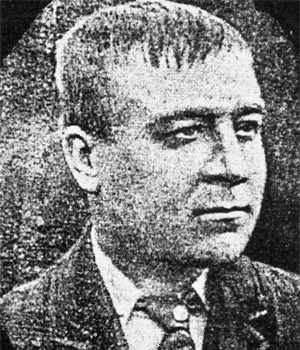Related Research Articles

Albert Pierrepoint was an English hangman who executed between 435 and 600 people in a 25-year career that ended in 1956. His father Henry and uncle Thomas were official hangmen before him.

William Marwood was a hangman for the British government. He developed the technique of hanging known as the "long drop".
Capital punishment in Canada dates back to Canada's earliest history, including its period as a French colony and, after 1763, its time as a British colony. From 1867 to the elimination of the death penalty for murder on July 26, 1976, 1,481 people had been sentenced to death, and 710 had been executed. Of those executed, 697 were men and 13 were women. The only method used in Canada for capital punishment of civilians after the end of the French regime was hanging. The last execution in Canada was the double hanging of Arthur Lucas and Ronald Turpin on December 11, 1962, at Toronto's Don Jail. The military prescribed firing squad as the method of execution until 1999, although no military executions had been carried out since 1945.
John Ellis was a British executioner for 23 years, from 1901 to 1924. His other occupations were as a Rochdale hairdresser and newsagent.

Henry Albert Pierrepoint was an English executioner from 1901 until 1910. He was the father of Albert Pierrepoint and brother of Thomas William Pierrepoint.
Thomas William Pierrepoint was an English executioner from 1906 until 1946. He was the brother of Henry Pierrepoint and uncle of Albert Pierrepoint.
James Berry was an English executioner from 1884 until 1891. Berry was born in Heckmondwike in the West Riding of Yorkshire, where his father worked as a wool-stapler. His most important contribution to the science of hanging was his refinement of the long drop method developed by William Marwood, whom Berry knew quite well. His improvements were intended to diminish mental and physical suffering and some of them remained standard practice until the abolition of capital punishment for murder.
Syd Dernley was appointed assistant executioner by the Home Office in 1949, and participated in 20 hangings until he was replaced in 1954.

HM Prison Swansea is a Category B/C men's prison, located in the Sandfields area of Swansea, Wales. The prison is operated by His Majesty's Prison Service, and is colloquially known as 'Cox's farm', after a former governor.
Alexander Armstrong English was a British national who was the official hangman of Canada between 1912 and 1935. It is estimated he carried out more than 600 hangings in all of Canada's provinces and incorporated territories.

John Clarence Woods was a United States Army master sergeant who, with Joseph Malta, carried out the Nuremberg executions of ten former top leaders of the Third Reich on October 16, 1946, after they were sentenced to death at the Nuremberg trials. Time magazine credited him with 347 executions to that date during a 15-year career. According to later research, a number of 60 to 70 over a period of two years is more credible.
Bartholomew Binns (1839–1911) was an English executioner from November 1883 to March 1884. When William Marwood died on 4 September 1883 after a brief illness, Binns was appointed to the position of Executioner for the City of London and Middlesex. Before becoming hangman, Binns was employed as foreman platelayer at Dewsbury by the Lancashire and Yorkshire Railway Company, but after he got the post he no longer worked anywhere.
Thomas Henry Scott was an English executioner from 1889 to 1901. He was from Huddersfield in Yorkshire. A ropemaker by trade, he acted as executioner on seventeen occasions. He was on the Home Office list of approved executioners from 1892 to 1895.
Thomas Billington was an English executioner from 1897 to 1901 and was one of four family members who worked in the occupation.
John Billington was an English executioner. He was on the Home Office list from 1901 to 1905.

William Billington was an English executioner. He was on the Home Office list from 1902 to 1905 and had participated in hangings from 1899.
Robert Orridge Baxter was an English executioner from Hertfordshire. His career lasted from 1915 to 1935, during which he carried out 44 hangings and assisted at 53 others.
Alfred Allen was an English executioner from Wolverhampton. His career lasted from 1928 to 1937, during which he carried out 3 hangings as a chief executioner and assisted at 14 others.
Stanley William Cross was an English executioner from Wormwood Scrubs. His career lasted from 1932 to 1941, during which he carried out four hangings as a chief executioner and assisted at 20 others.
George Smith (1805–1874), popularly known as Throttler Smith, was an English hangman from 1840 until 1872. He was born in Rowley Regis in the English West Midlands, where he performed the majority of his executions. Although from a good family he became involved with gangs and petty crime in his early life, and was imprisoned in Stafford Gaol on several occasions for theft.
References
- ↑ "The English hangmen 1850 - 1964". capitalpunishmentuk.org. Retrieved 2010-11-19.
- ↑ Fielding, Steve. The Executioner's Bible: The Story of Every British Hangman of the Twentieth Century (John Blake, 2008), p. 148.
- ↑ Fielding, pp. 148-150
- ↑ Fielding, pp. 268-272